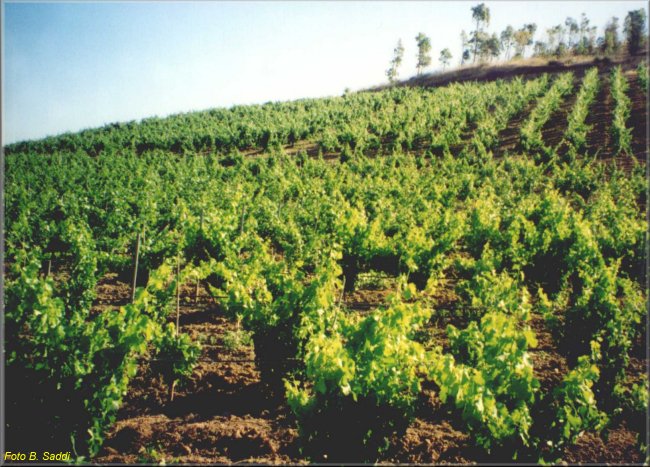Italiano |
Enogastronomy Enogastronomy of Sardinia
|
|||||||
In this non-profit site we illustrate simple recepies, not is some commercial nexus; to speak about wines is instead different, beyond describing in analytical way the organolettiche characteristics of wines, when they come faced the specific couplings of traditional recepies with our wines, will have necessarily to be made " name and last name " of the single wines that will come proposals. That because enough not to speak about " cannonau " or " vermentino " in order identifying in a way the characteristics of the wine. From a same one vineyard a various wine to second of the territory of production and to parity of territory in function of the technological cycle of vinification of the producer derives. Therefore to report the commercial name of the wine and its producer will derive does not give to an advertising attempt but from one necessity of practical order. The engagement however is that one to dedicate to the attention to all the productive truths with particular care to those that they are being distinguished for the valorization of our wines in Italy and the world.

Vitivinicole zones of Sardinia
The life in Sardinia always has been one cultivation to high dissemination, for delimited how much in areas of particular vocation.
The numerous tipologie of the vitigni Sardinian testify the various cultures in the time. In fact Sardinia, also in the field of the vitiviniculture has had in the antiquity the infuence of the Fenici, the Cartaginesi, the Roman and the Spanish. From the disparati places more they came imported vitigni that in the course of the centuries they have assumed such appearances to originate of particularly typical wines like the Vernaccia of Oristano and the Cannonau of Sardinia. In the meantime it has been given also one answer to the crescent you ask of freschi and delicate table wines, with the Vermentino di Gallura and of Sardinia, the Nuragus of Cagliari and others.
Interesting the wine production from dessert, previewed in nearly all the D.O.C., obtained from the vitigni moscato and malvasia and others, exclusively cultivated in the island. The viticoltura has been developed above all in the litoranee zones, occupying the low hill and the plain; in fact in the inner areas, beyond to the Campidano little the common ones with superficial are vitate that they exceed the 500 hectares. Between these, however Oliena and Ierzu, two geographic under denominations, to Head united Shod, of the Cannonau of Sardinia.
The subdivision for wine zones is following:
1.la province of Sassari, that it comprises the common ones of Alghero and Sorso with the greater extension invested to vineyard and that has the highest percentage of its destined territory to the grape. The great part of the vineyards is situated to north, in the western part, where we find the limekilns dolomitici, rare for the Sardinia, from the typical red color, had to the iron presence. This is the typical zone of the Vermentino di Gallura, whose vineyards are implanted on lands from the sweeter morphology, than recent origin, of granitica clay derivation, poor and that they need of the aid irrigation; 2.la province of Nuoro, where the greater part of the vineyards is found in wraps litoranea or in proximity to it. The common one of Dorgali, in this area, is what it boasts the greater invested surface to grape. However all the Ogliastra, from Ierzu to Lanusei, Tortol� and more to settentrione to Oils an enlivened limestone hill succession, between forests of olive, where it low dominates the culture to little tree of vitigno the Cannonau, than here from the best qualitative expressions. In the inner angle of the island, zone mostly to collinare, comes produced the Mandrolisai wine, omonimo name of one of the 22 Sardinian sub-regions. Here the screw still is raised with old systems to little tree or modified little tree, while in the more fertile lands and the new systems it is rerun to the low espalier or the Guyot;
3.la province of Oristano is an other area that boasts ancient viticole traditions, often of large pregio. In this zone the common one with greater viticola extension is Terralba, while the low valley of the Tirso is the area where the more typical wine of Sardinia is perhaps produced, the Vernaccia of Oristano;
4.The inner area of the province of Cagliari where the vineyards s' meet along the collinari and montane slopes ovunque the morphology concurs it.
Important vitivinicole zones are the hills of the Trexenta, leave of the Marmilla, the Iglesiente and the Sarrabus.
In the agrarian regions of the Campidano of Cagliari, Serrenti and San Gavino, we have the greater viticola concentration of the Sardinia and the presence of numerous wine cellars cooperatives of large dimensions. In this zone the vines extend without interruption from the outskirtses of the capoluogo to Monastir, Dolianova, Serdiana to Mandas. The three fifth of the Sardinian vineyard are in this favorable climato-pedologico atmosphere to intensive breedings. Here the Sardinian viticola evolution is begun, inspired to various productive concepts from the tradition, for the production of modern wines.
The litoranea of the Cagliari area comprises the hills that costeggiano the sea of Iglesias, Sulcis, Head Teulada, to the west and Carbonara Head and Shod Capo to east. These are the more barren zones of the island, where the fertility is low, but also here, in the less difficult areas, the screw very has been adapted. Evocative it is the landscape viticolo of the islands of S. Antioco and San Peter.
Some between the vitigni more cultivated in Sardinia:
RED BERRY: Bovale, large Bovale, Cannonau, Carignano, Gir�, Monica, Pascale, Sangiovese.
WHITE BERRY: Chardonnay, Malvasia of Sardinia, white Moscato, Nasco, Nuragus, Torbato,
from Tuscany Trebbiano and Romagna, Vermentino.
